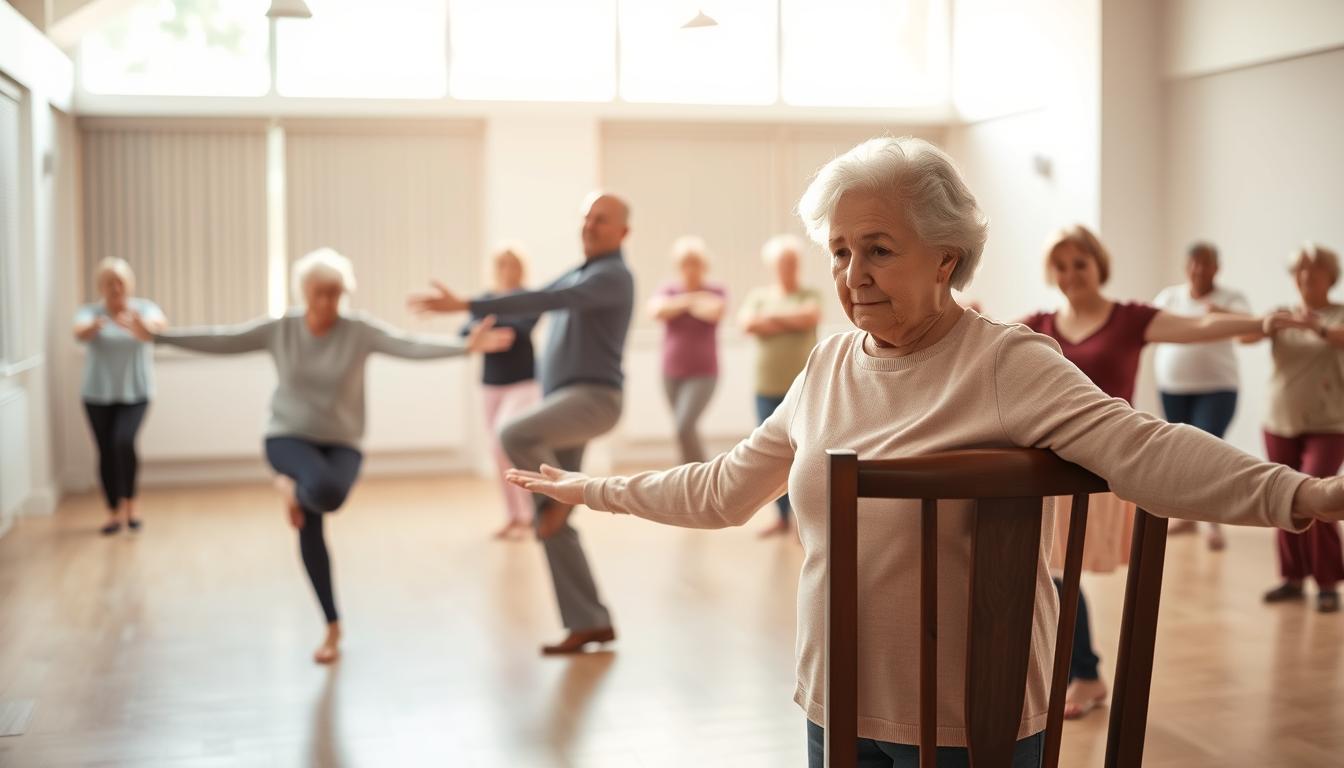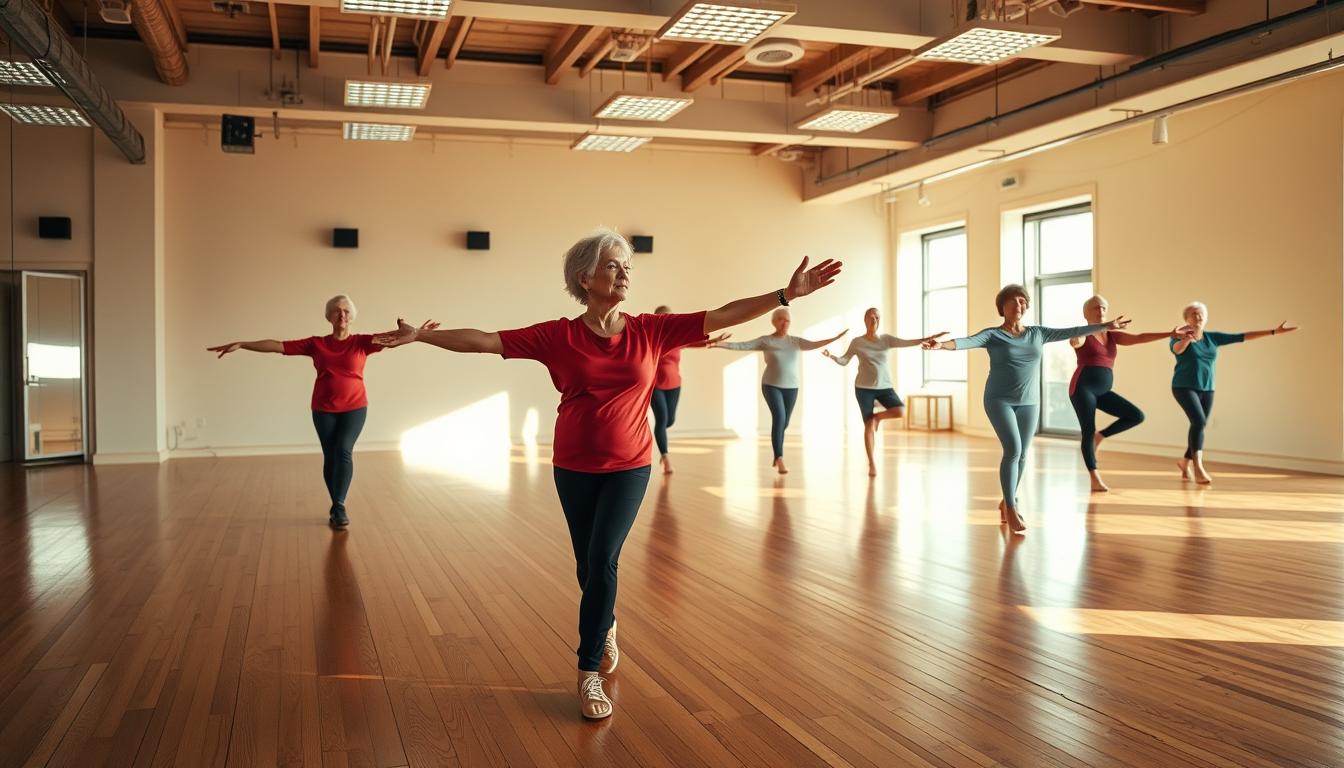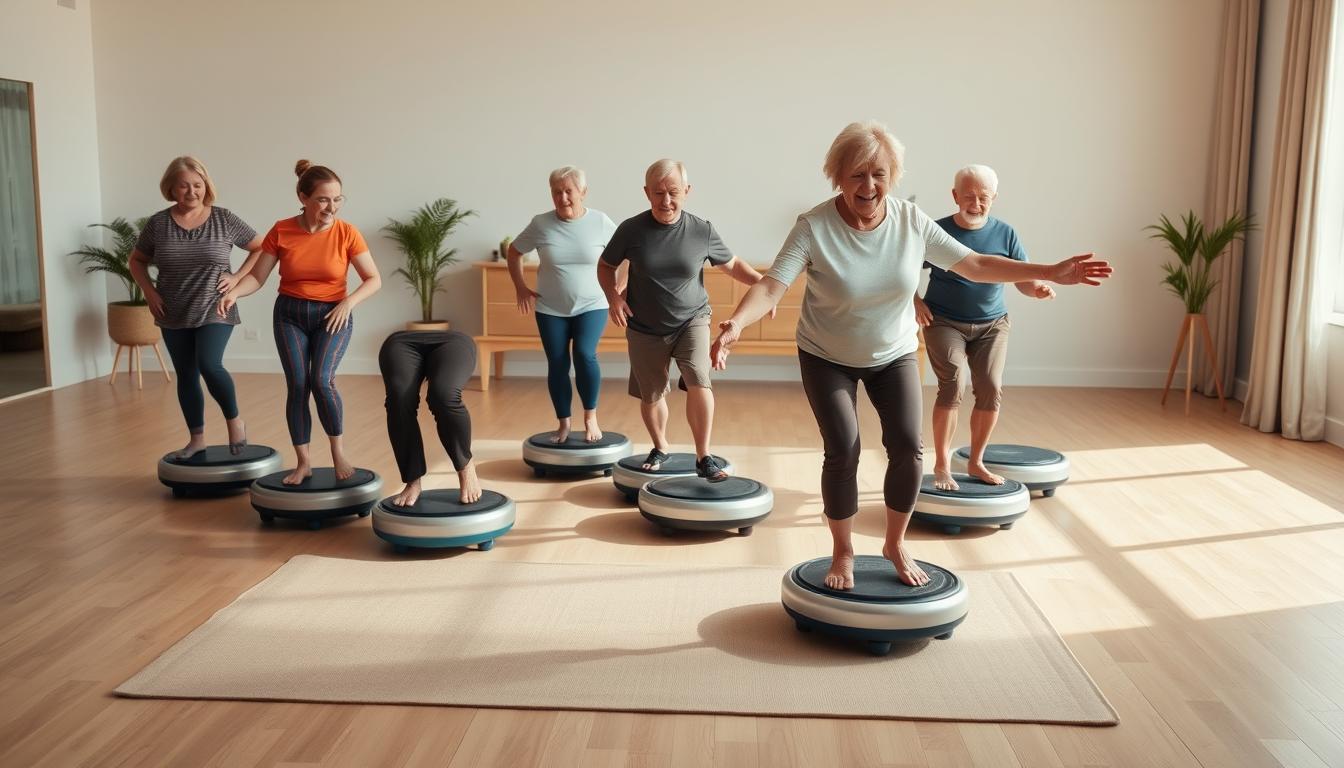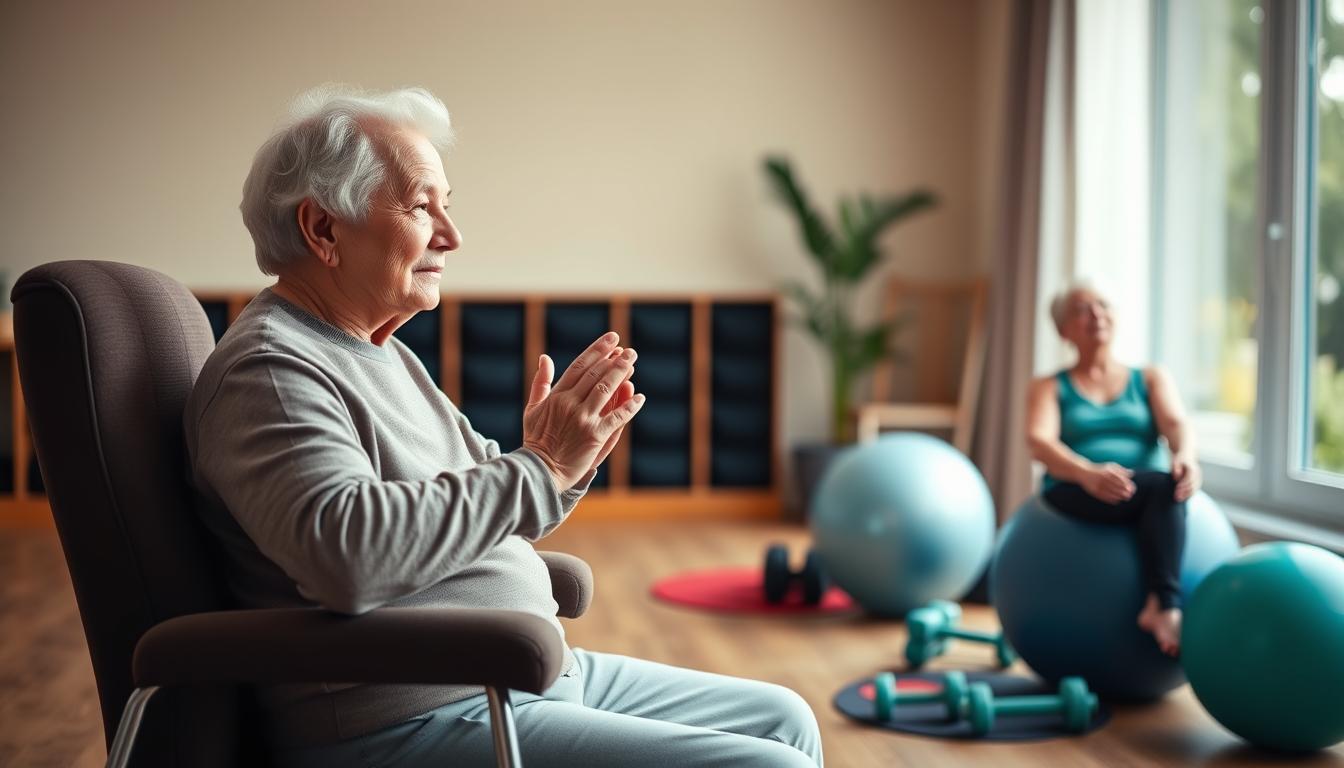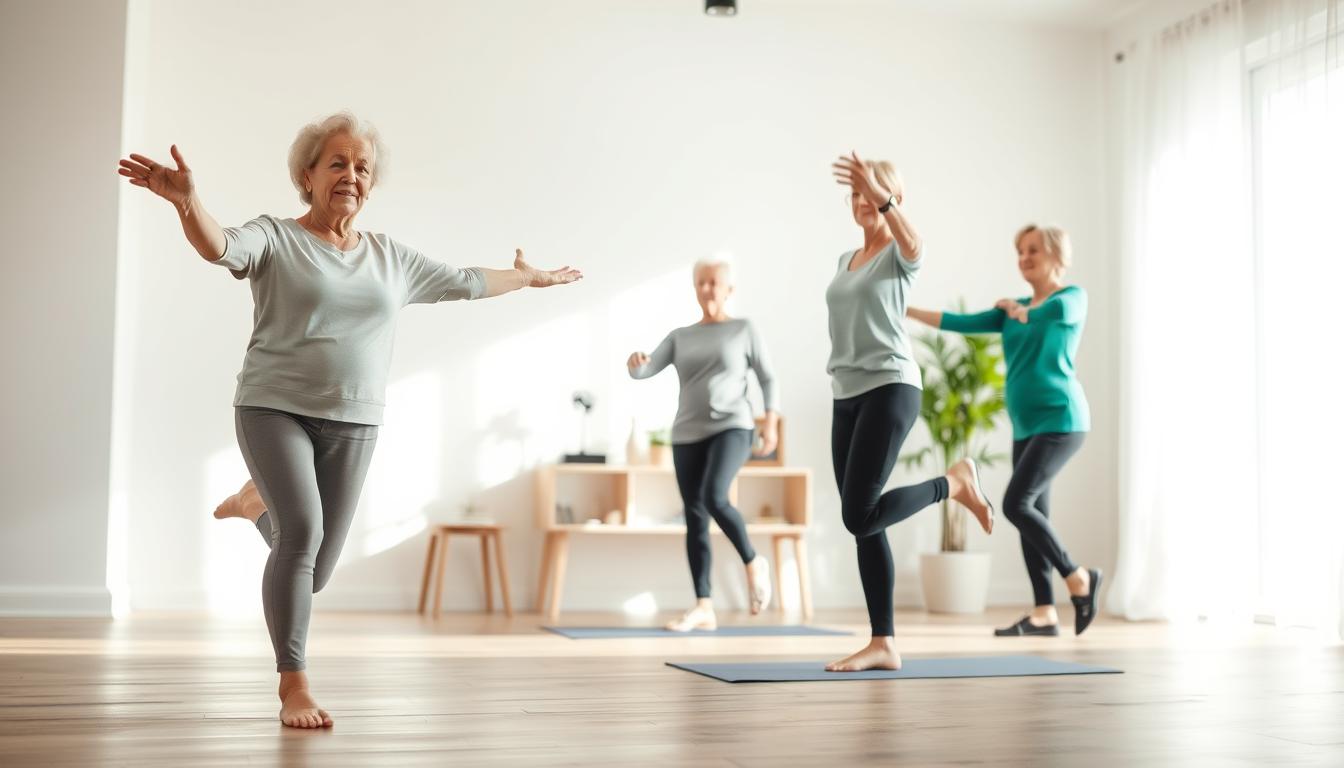Want to stop worrying about slips and spills? A quick daily routine using household items like your kitchen counter or dining chair can sharpen your stability faster than you’d think. I’ve seen folks in their 70s outpace their grandkids after adopting these tricks – no gym membership required.
SilverSneakers coach David Jack says it best: “Your body’s like a bicycle – if you don’t pedal, you tip over.” That’s why I’ve stolen his favorite move – the “toaster reach” (pretend you’re grabbing burnt toast without face-planting). It’s ridiculous but works better than fancy equipment.
Here’s the kicker: Spending 3 minutes practicing heel-to-toe walks while waiting for coffee could mean the difference between “Oops, I stumbled” and “Ambulance, please.” And before you say “I’m too old,” my 82-year-old aunt does these moves during Jeopardy commercials. Her balance? Better than Alex Trebek’s final episodes.
We’re not talking marathon sessions. One video I love shows how to turn brushing your teeth into a strength-building exercise (hint: stand on one leg like a flamingo). You’ll feel more alert by lunchtime – and might finally stop tripping over the dog’s toys.
Creating a Safe and Inviting Exercise Zone
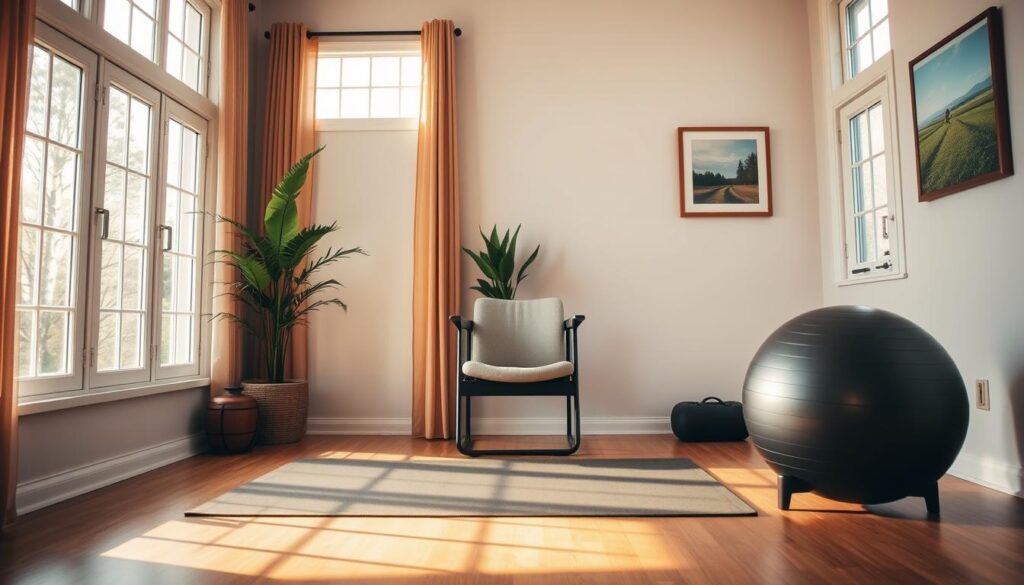
Your living room might just be the best gym you’re not using. I’ve helped countless folks transform cluttered corners into stability hubs using items already within arm’s reach. Forget fancy equipment – your dining chair makes a perfect balance rail, and that stack of cookbooks? Ideal for step drills.
Secure Your Space with Everyday Items
Start by clearing a 4×4 foot area – about the size of a yoga mat. Use painter’s tape to mark boundaries if needed. Position yourself near a wall or countertop for quick grabs. Here’s my go-to setup:
| Household Item | Fitness Use | Safety Benefit |
|---|---|---|
| Dining Chair | Support during leg lifts | Prevents backward leans |
| Throw Pillows | Cushioned surface for floor work | Redces fall impact |
| Wall Space | Hand placement guide | Improves spatial awareness |
Gather Essential Support Tools
Your body deserves reliable allies. Keep a sturdy side table nearby for water breaks and quick stability checks. I always recommend testing surfaces first – if that end table wobbles when you lean, it’s better as a plant stand.
For seated routines, fold a bath towel under your hips to engage your core. Rotate between three anchor points during moves: wall, chair back, and countertop. This builds full-body awareness while keeping risks low.
Who needs pricey gear when your coffee table doubles as a balance beam? Just remember: Safety isn’t about perfection – it’s about creating a space where you can challenge yourself without hesitation.
Dynamic Warmup Techniques for Every Move

Think of warming up like tuning a guitar – you wouldn’t play a concert without checking the strings first. I’ve found that treating your joints like musical instruments (weird, but stick with me) creates better harmony in your balance training. My neighbor Martha calls these her “pre-game shows” – she does them while her microwave popcorn spins.
Articulating Arm and Leg Movements
Start with slow-motion shadowboxing – imagine pushing through maple syrup. Lift alternate knees like you’re marching through shallow water. Here’s why it works:
| Movement | Purpose | Pace Tip |
|---|---|---|
| Arm Windmills | Loosens shoulder joints | 5 seconds per rotation |
| Seated Leg Lifts | Activates core muscles | Hold 3 breaths at top |
| Ankle Alphabet | Improves foot coordination | Write “A” to “E” slowly |
I once taught these to a retired ballet teacher who said they felt like “stretching taffy” – that’s exactly the sticky-smooth rhythm you want.
Mixing Side Steps with Gentle Stretches
Try the “bookworm shuffle”: side-step between bookshelves while reaching for imaginary titles. Pair each lateral move with a calf stretch – pretend you’re pushing against a rolling library cart.
New to this? Grab your phone and search “beginner-friendly warmup videos” – I’ve bookmarked several that show exact hand placements. Remember: Speed kills progress. If you’re above a 4 on the effort scale (1=snail, 10=cheetah), you’re moving too fast.
These aren’t generic stretches – they’re stealth missions targeting the same muscles you use standing up from recliners or reaching for top-shelf tea bags. Do them daily, and you’ll feel like your joints got oiled by a friendly mechanic.
Staying Steady with 10 Minute Balance Exercises for Seniors
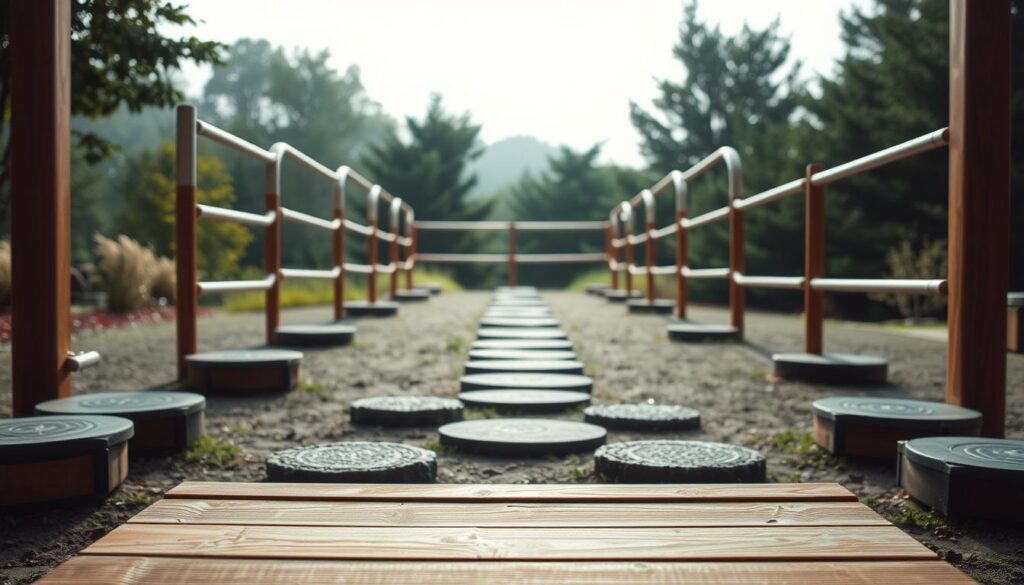
Your morning coffee routine just got a stability upgrade. Let’s walk through seven targeted moves that transform kitchen counters into personal training stations – no spandex required.
Breaking Down a Seven Moves Circuit
This sequence works like a security system for your joints. Try this flow:
- Tree Pose Prep: Stand sideways to counter, lift right knee to hip height (5 seconds). Imagine balancing a paperback on your thigh
- Heel-to-Toe Transit: Walk along tile lines like a tightrope artist – hands hover near support
- Sit-to-Stand Squats: Lower halfway to chair seat, pause 3 breaths before rising
SilverSneakers trainers swear by the “3-second hold rule” – that momentary pause builds more core strength than rapid reps. Feel your abs engage when reaching for high shelves? That’s the magic working.
Monitoring Your Effort on a 1-to-10 Scale
Your personal intensity meter matters more than reps. Here’s how to gauge:
| Number | Feeling | Action |
|---|---|---|
| 3-4 | Comfortable chat | Add 2-second holds |
| 5-6 | Focused breathing | Maintain current level |
| 7+ | White-knuckling | Grab support immediately |
I learned this scale from a yoga instructor who trains octogenarians. “If you’re grimacing, we’re missing the point,” she says. The sweet spot? You should feel like you’re learning – not struggling.
Need visual confirmation? The companion video shows exact hand placements during transitions. One viewer told me it’s like having a spotter whisper “shift weight left” right when needed. Give it a watch – your future steady self will thank you.
Boosting Core Strength in Practical Steps

Your dishwasher might hold the secret to better posture. I’ve discovered that slow, deliberate movements work like WD-40 for your midsection – they lubricate those deep muscles you forgot existed. Picture this: holding a soup can overhead while shifting weight becomes a masterclass in body control. One client calls it “core chess” – every move requires strategy.
Executing Slow Movements with Precision
Treat each exercise like assembling IKEA furniture – rushing leads to wobbly results. Try this trio:
| Move | Muscle Target | Pro Tip |
|---|---|---|
| Seated March | Lower abs | Imagine lifting knees through peanut butter |
| Pelvic Clock | Hip stabilizers | Pretend your pelvis is tracing numbers |
| Towel Slides | Obliques | Use placemats as makeshift sliders |
I stole the pelvic clock idea from a physical therapist who trains circus performers. “Speed erases progress,” she told me. That’s why I have clients count Mississippi seconds during lifts – it prevents cheating.
Safety tip: Keep one pinky touching a wall during new moves. It’s like having training wheels for your workout. Saw a student once try these while balancing on phone books – let’s just say we stick to solid surfaces now.
Remember: precision beats sweat. If you’re trembling like a Chihuahua, scale back. These techniques mirror what elite trainers use, minus the yelling. Do them during TV credits, and you’ll notice easier grocery lifting by Thursday.
Infusing Variety into Your Balance Routine
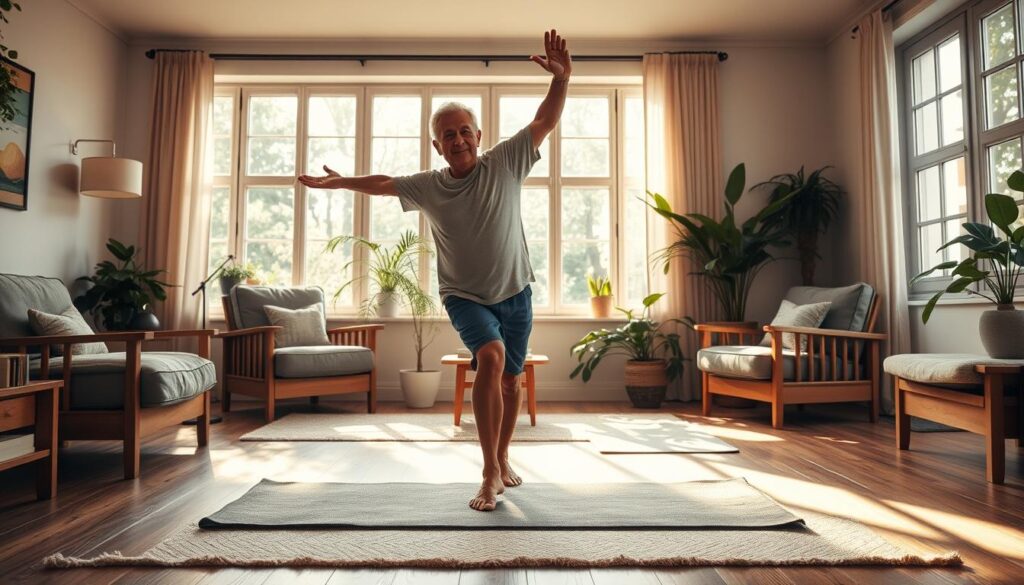
Your favorite TV show could become your new workout partner. I’ve seen clients transform reruns of Golden Girls into balance-boosting marathons by adding simple tweaks during commercial breaks. Here’s the secret: novelty triggers progress.
- Stand on folded towels during heel raises – it’s like doing calf lifts on a marshmallow
- Play “musical chairs” with exercise spots – shift positions after each set
- Add finger painting motions while balancing – engages your brain differently
Mix in two favorite moves between circuit drills. Love gardening? Do standing “seed toss” reaches. Prefer dancing? Add a subtle hip sway during weight shifts. One client does “soap opera squats” – she only exercises during dramatic cliffhangers.
Stuck? Watch 30-second clips from fitness videos while brushing your teeth. The quick view sparks fresh ideas without overwhelming you. I recently saw a trainer use soup cans as improvised weights – genius!
| Classic Move | Fun Modification | Benefit |
|---|---|---|
| Chair Squats | Add jazz hands at the top | Boosts coordination |
| Heel-to-Toe Walk | Carry a cup of water | Sharpens focus |
| Single-Leg Stand | Hum your favorite song | Distracts from effort |
Rotate sequences weekly. Monday could be “slow-motion day”, Thursday “dance-inspired flows”. Variety isn’t just about fun – it rewires neural pathways faster than repetitive drills. Remember: The goal is to stay curious, not perfect. Your body thrives on pleasant surprises.
Leveraging Visual Guides for Real-Time Feedback
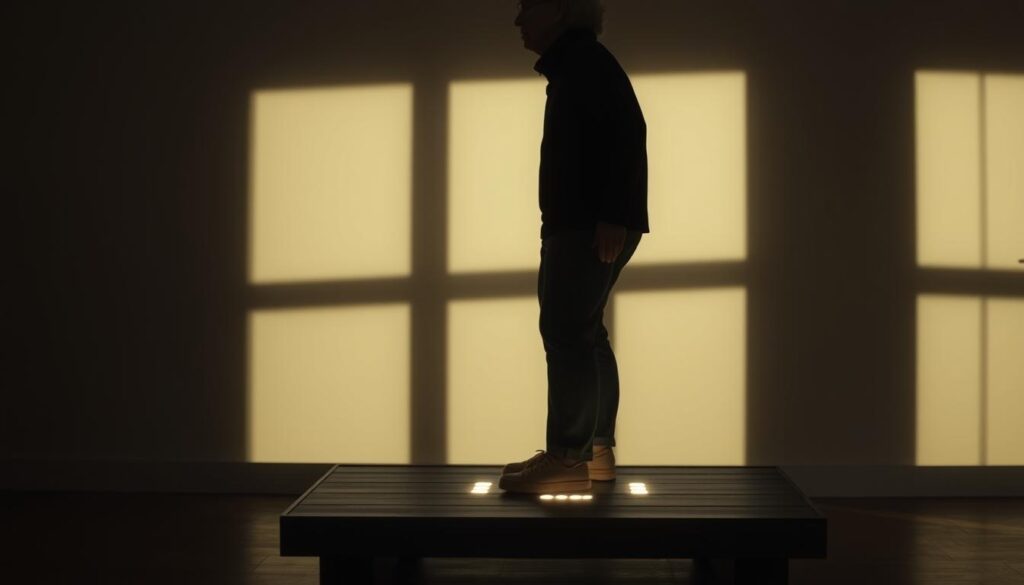
Your smartphone camera isn’t just for selfies anymore—it’s your new balance coach. I’ve watched clients transform shaky movements into rock-solid poses by using visual feedback like they’re playing fitness charades. SilverSneakers trainers call this “movement mirroring” – and it works better than you’d guess.
Interpreting Tempo and Pattern Shifts
Notice how your shadow moves differently than the instructor in workout videos? That’s gold. Try this trick: prop your phone against a water bottle and record 30 seconds of heel-to-toe walks. Watch for:
| Visual Cue | What It Means | Quick Fix |
|---|---|---|
| Shoulder Hunch | Over-gripping support | Relax fingers |
| Fast Hip Sway | Rushing transitions | Count “1-Mississippi” |
| Head Tilt | Focusing downward | Pick a wall spot to stare at |
Applying Real-Time Adjustments
Keep a trusted exercise book open to your current move. Compare your reflection to the diagrams between sets. One client uses her toaster’s chrome surface as a makeshift mirror – genius!
Here’s my favorite hack: Stream a view video tutorial on mute while practicing. Your brain will subconsciously match the instructor’s pace. Just don’t get distracted by their fancy leggings.
Remember: Your body speaks in whispers. A pinky finger drifting sideways often signals upcoming imbalance. Catch it early, and you’ll avoid those “Whoa, almost!” moments. Now go film your flamingo pose – your future steady self will want that footage.
Insights from Fitness Experts and Real Success Stories

What do a retired teacher and a best-selling book have in common? Rock-solid stability. I’ve watched Martha (72) transform her morning crossword ritual into balance training using methods from the “Whole Body Reset” – she now does single-leg stands while reciting state capitals. Her secret? “Treat every day like a lab experiment,” she laughs.
SilverSneakers Perspectives on Stability
David Jack calls aging joints “wisdom indicators, not expiration dates.” His counterintuitive tip? “Stop trying so hard.” Instead of white-knuckling through exercises, he suggests pretending you’re balancing a soup bowl on your head during heel raises. One client gained 12 seconds of unassisted standing time using this mental trick.
| Myth | Reality | SilverSneakers Fix |
|---|---|---|
| Balance declines naturally | Neural pathways strengthen with use | Change stance surfaces weekly |
| Gym required for progress | Household items work better | Use stair railings for lateral walks |
| Core strength needs equipment | Towel slides activate deeper muscles | Do seated marches during commercials |
Practical Tips from Health Professionals
The book I recommend to beginners? AARP’s video-backed guide showing how to turn laundry folding into core work. Try their “sock match balance drill” – it improved one student’s reaction time by 40% in six weeks. Physical therapists swear by these no-money tricks:
- Read paperbacks standing on foam bath mats
- Practice chair yoga poses during phone calls
- Stream free videos while waiting for prescriptions
These aren’t theoretical ideas – they’re battle-tested strategies from people who’ve stared down aging and won. Your strength journey doesn’t need perfect form or pricey gear. Just a willingness to view everyday moments as opportunities to outsmart gravity.
Wrapping Up Your Routine with Confidence and a Spark of Creativity
Your daily routine holds hidden chances to build unshakable stability. Every kitchen counter reach and laundry basket lift? Those exercises quietly fortify your “balance fortress” – one rep at a time. I’ve seen clients turn grocery runs into stealth training by practicing single-leg stands while scanning coupons.
Try this tonight: Do a final 10-minute balance drill using your sofa arm as support. Mix heel taps with improvised dance moves during ads. Why? Creativity rewires your brain faster than rigid routines. A student once told me her best stability gains came from “microwave tai chi” while reheating leftovers.
Your workout becomes a top performer when paired with a flexible plan. Rotate between three favorite moves weekly – maybe flamingo stands on Monday, towel-step drills Thursday. Remember: Consistency isn’t about perfection. It’s showing up in socks or slippers, ready to start.
True confidence sprouts when core strength meets playful curiosity. That slight wobble during a side reach? Proof you’re challenging gravity’s pull. Keep a view of your progress – film your first attempt, then compare it to week three. You’ll see subtle shifts even your dog notices.
Now go repurpose that stack of cookbooks into a balance beam. Your fitness journey thrives on reinvention, not rules. What unexpected movement will you try tomorrow?
